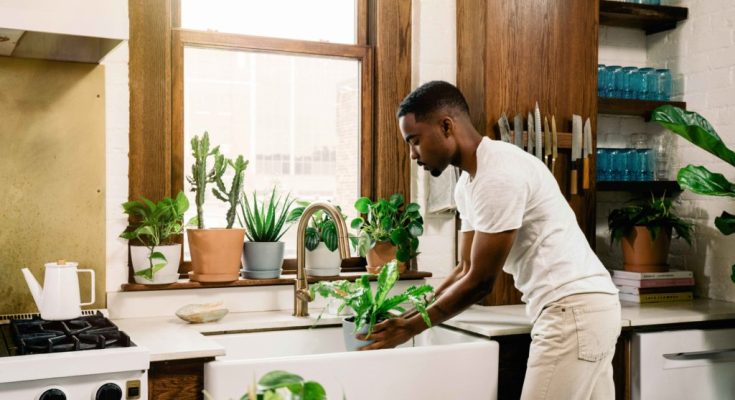You’ve probably noticed some major new growth on your houseplants thanks to the higher light, longer days, and warmer temperatures of spring. Now that summer has officially arrived, don’t expect plants to slow down anytime soon! We’re sharing our top summer houseplant care tips to help you nurture all that new growth.
If you missed our ultimate spring care guide, start there first. You’ll find advice on how to repot and clean up your plants, along with tips for adjusting your watering routine.

Summer Houseplant Care Tips
Let’s jump in—here are our top tips for summer plant care!
Tip 1: Double-check your routine

You’ve probably noticed a big change in your care routine over the past couple of months! Plants naturally respond to their environment. As we near the summer equinox, days become longer than any other time of the year. More light plus higher temperatures and increased humidity equal a prime growing environment for your plant.
With all this fuel for growth, you’ll need to make a few changes to your routine:
- Water plants more frequently: Simply put, faster growing plants use more water. Always water plants deeply until excess water drips from the drainage hole. Troubleshoot your watering routine by learning about the common signs of over- or under-watering plants.
- Adjust for seasonal light changes: Houseplants can be susceptible to sun-scorch from the intense summer rays. Affected leaves may become bleached in color. If you see this, move your plant away from the window and consider removing the damaged leaves, which will not recover.
Tip 2: Cut back plants
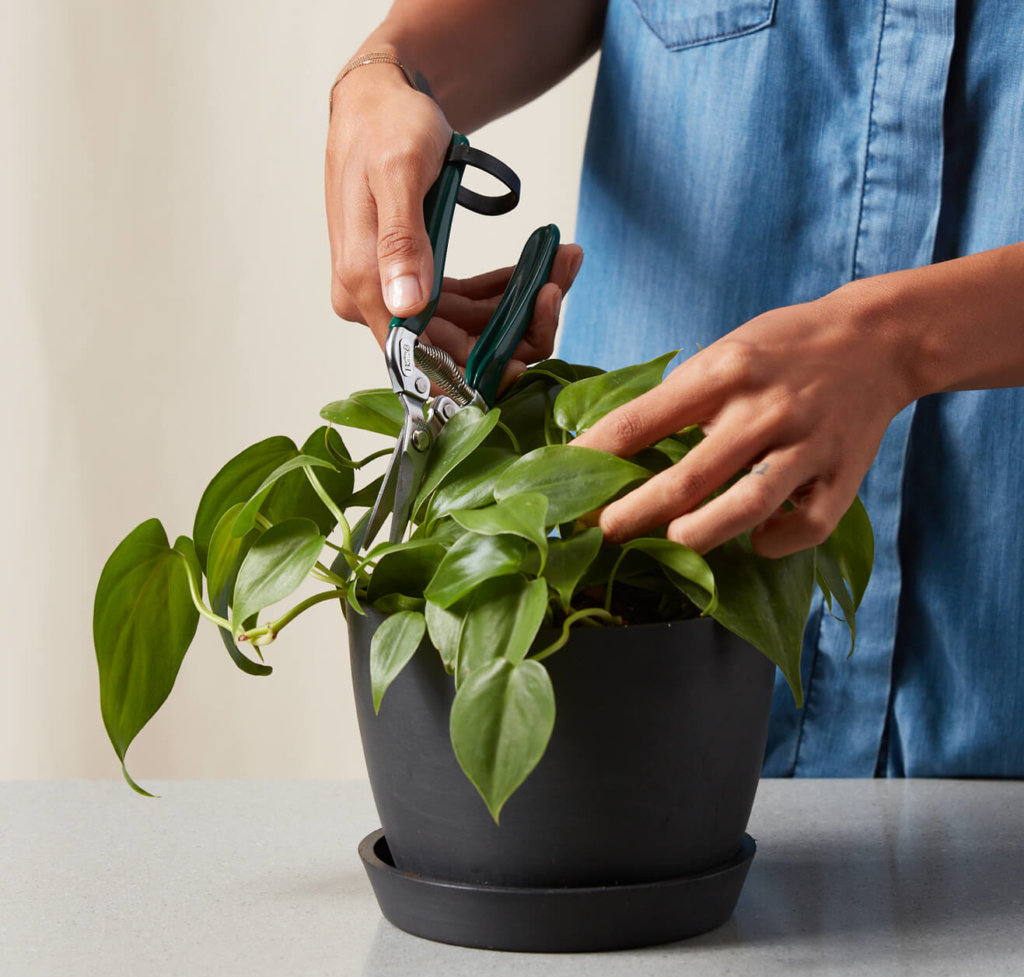
If your previously tame plant went wild with a spring growth spurt, it might be time to cut that plant baby back! Cutting back plants (also known as pruning) has many benefits:
- Size control: Unexpected growth spurts can mean your plant quickly outgrows its spot! Trim any out-of-control branches with a pair of sharp snips, taking care to remove no more than 25% of the leaves.
- Shaping: A growth spurt can also cause a previously manicured plant to become shaggy and undefined. It’s easy to refine the shape by shearing with a sharp pair of pruning scissors.
- Rejuvenation: Has your plant become tattered and weary, with leggy or sparse growth? It might be time for a rejuvenation prune! This is a more extreme approach that includes removing most or all of the leaves to make way for fresh, new growth. If you’re nervous about taking drastic measures, reach out to the Grow-How Team® for advice!
- Reblooming: For blooming houseplants, it can be beneficial to remove old flowers once they begin to fade. This allows the plant to put energy into producing new blooms rather than seed.
For a crash course on all things plant pruning, check out this article on how to trim your plants.
Tip 3: Fertilize!
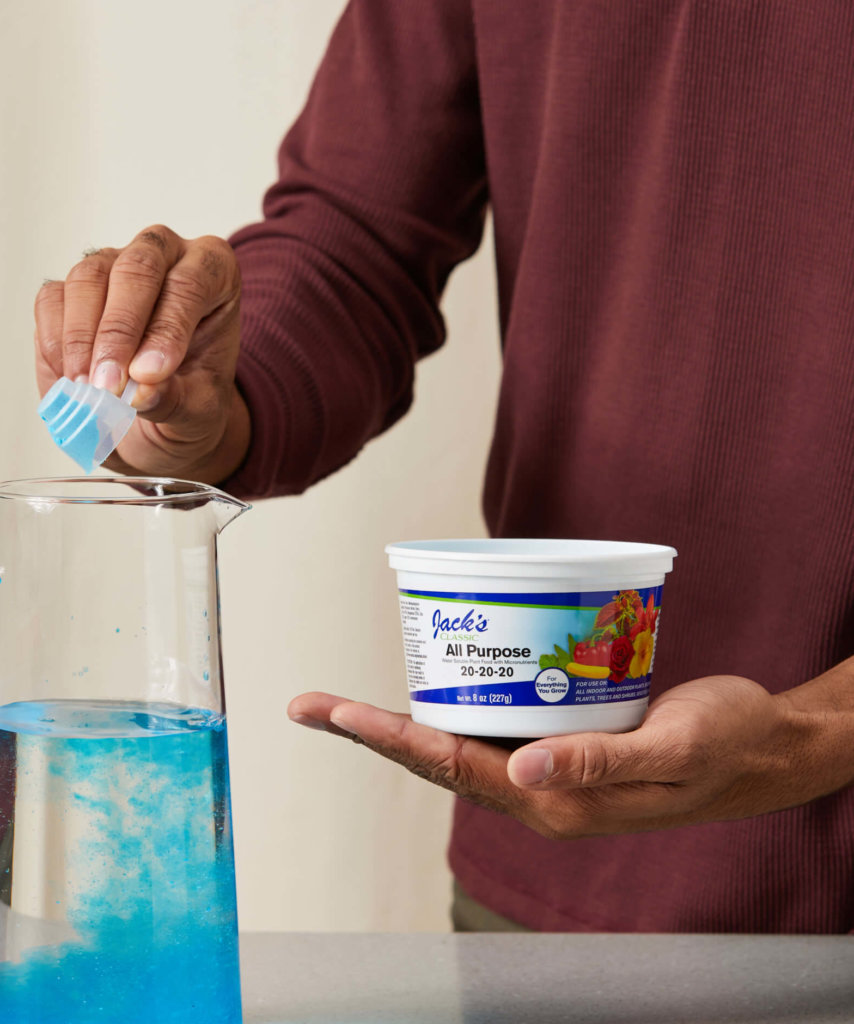
Fertilizing plants is necessary to help them thrive. This is especially important during times of active growth, since the potting mix can become depleted of essential nutrients. You’ll find everything you need to know in our fertilizing 101 guide, but here are some key takeaways:
- Most houseplants appreciate a fresh application of fertilizer 1-2 times per month. For specifics, check out our A-Z guide.
- Fertilizing is easy! Just mix and pour as if you are watering the plant.
- Don’t ever apply fertilizer to dry soil. We recommend a thorough watering 1-2 days before you fertilize.
There are many types of fertilizer out there. An all-purpose fertilizer, which has an equal balance of macronutrients, is great for most houseplants. If you grow plants for flowers or fruit, use something like our houseplant special fertilizer that’s high in phosphorus. There are many speciality fertilizers available, like palm fertilizer high in potassium or air plant fertilizer meant to be sprayed on the foliage.
Tip 4: Scout for problems
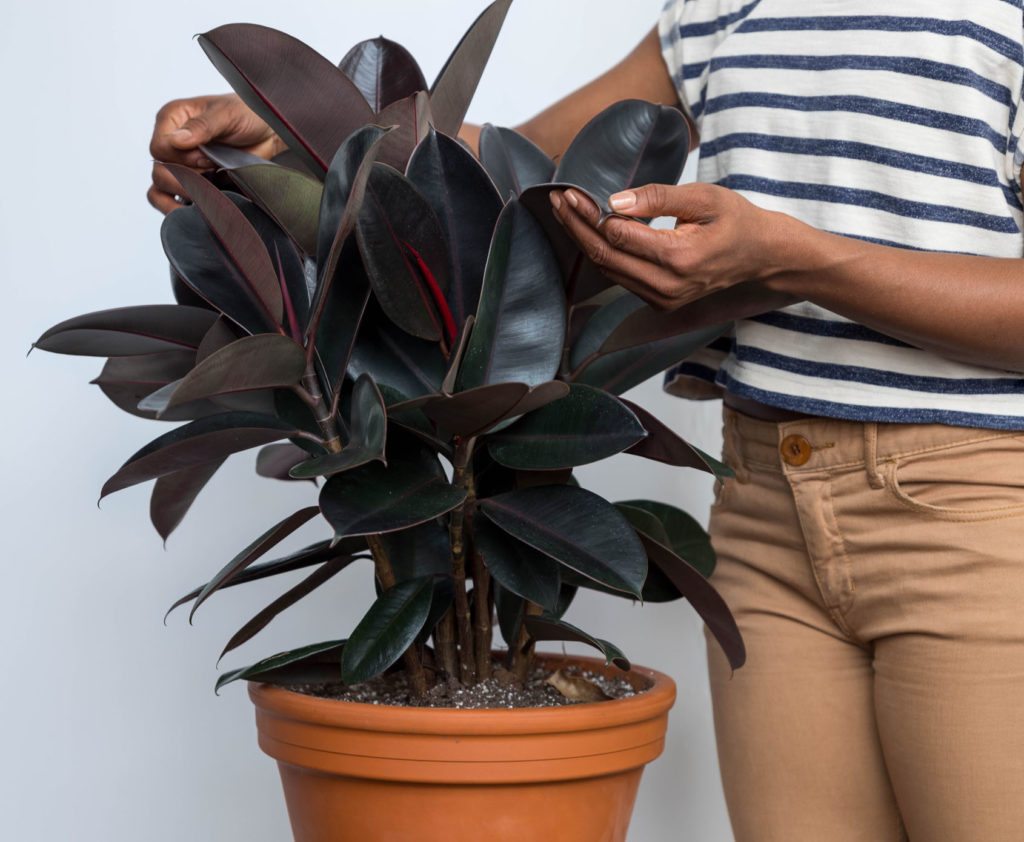
Like it or not, pests and disease go hand-in-hand with nurturing a houseplant. If you pay a little extra attention, you might catch problems early. This will ultimately make treating the problem faster and more effective.
- Pests: Open windows can bring a welcome breeze, along with unwanted insects to your plants. Pests can also hitch a ride on pets and people coming in from the outdoors. While no one wants to deal with bugs in their home, pests are a completely normal houseplant issue. They’re easily controlled, especially if you catch them early.
- Common houseplant pests include spider mites, mealybugs, aphids, whitefly, and thrips.
- Fungus gnats, springtails, and millipedes are also common. Since they love moisture, their presence may indicate you are watering too often.
- Scale are another common, but sneaky, pest. The adult insects don’t move and typically look like small, raised brown bumps on the stem or leaf.
- Diseases: Fungal issues can be common in the summer thanks to high humidity. Air conditioning tends to keep humidity down. If you’re dealing with high humidity indoors, providing gentle airflow and keeping the leaves dry can go a long way in preventing these issues. Place your plant near an open window or a fan, and avoid misting or splashing water on the leaves.
We recommend keeping an insecticidal soap or Neem oil on hand to treat most insects, and a copper fungicide around for fungal issues. Reach out to the Grow-How Team® to help diagnose your issue and identify the best treatment. We’re here to help you get your plants back on track!
Tip 5: Consider putting plants outdoors
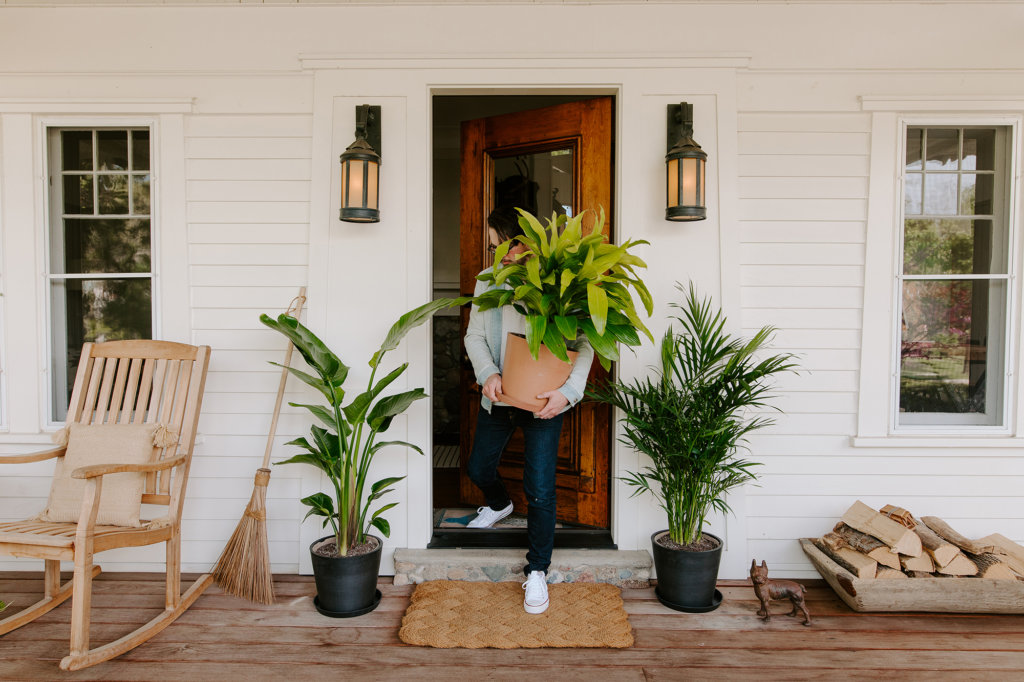
Allowing houseplants to summer over outdoors is a surprisingly effective tactic to encourage some seriously impressive growth. Warm temperatures paired with high humidity are what most houseplants crave! They’ll reward you with an explosion in growth. And while it’s true that plants are exposed to more pest and disease pathogens outdoors, a healthy and thriving plant is actually less susceptible to damage.
We share many tips for moving plants outdoors, including these important considerations:
- Plants need more water outdoors: Higher temperatures and wind means that plants living outdoors in pots will need to be watered more often.
- Houseplants need protection outdoors: We recommend using a shaded, protected area outdoors. Limit the amount of direct sun a plant receives to only the morning or evening hours for most houseplants, and acclimate those sun-loving plants over the course of a week or two. Finally, be sure to protect plants from strong winds that can tear the leaves and knock pots to the ground.
